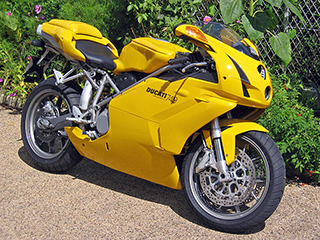David is the only boy that has green eyes.
In this sentence «that» is a relative pronoun. English has three relative pronouns: who, which, that.
Relative pronouns can stand in for another word (or words), so that we do not need to repeat them:
- The man is very nice. The man lives in that house.
- The man WHO lives in that house is very nice.
- He lives in the house. The house is quite small.
- The house WHICH he lives in is quite small.
The point is that WHO refers to persons (in this case «the man»), and WHICH refers to things (in this case «the house»). If you find yourself saying (or writing) «the man which …» or «the house who …» you are making a grammatical mistake.
Fortunately there is an easy way to avoid the problem. In most cases we can use THAT instead of who or which when they are relative pronouns.
 |
| I want to show you the motorbike ... |
In the following sentences, TWO of the relative pronouns could be used. One of them is THAT. What is the other?
I want to show you the motorbike I am hoping to buy.
The man is selling it is someone I work with.
The lady I was talking to is my Aunt Rita.
Do you know anyone has a job for me?